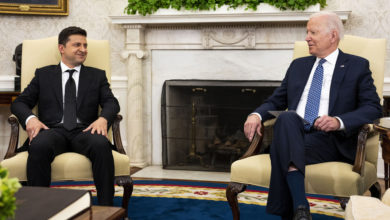The History of Royal Jubilee Celebrations

Queen Elizabeth II, Britain’s longest serving monarch, celebrates her 70-year anniversary on the throne this year. People across Britain will be participating in two public holidays, as well as a weekend of national celebrations to mark the Platinum Jubilee.
Much of the U.K. has experienced major changes since Elizabeth assumed the throne on the 22nd of May 1952. She has presided over 12 Prime Ministers and more than 50 Commonwealth nations and seen the independence of former British colonies. Her enduring popularity with the British and ritualistic celebrations of her Jubilee anniversary have remained constants over her 70-year reign.
Jubilee celebrations, from the large-scale ceremonies held by the royal family to the street parties that take place throughout the country, are an essentially British event. But this year’s Platinum event—to mark the Queen’s 70 years on the throne—is not just a one-off, but part of a long history of royal anniversary celebrations.
Here, the history of the Royal Jubilee and how it’s celebrated in the U.K.:
The Royal Jubilee: History
A Royal Jubilee celebrates a significant milestone in a monarch’s reign, and each one is named after the period of time which has passed: a Silver Jubilee marks 25 years, Ruby is 40, Golden is 50, Diamond is 60, and Platinum is 70. It used to not be common for monarchs to survive long enough to achieve these milestones. But, it has been a trend to break this pattern. As a result, Jubilee celebrations have grown more and more spectacular, particularly with Elizabeth—the first British monarch to reach the Platinum milestone.
It wasn’t until Queen Victoria’s 50th anniversary on the throne that the anniversary was celebrated on the same scale that it is today. Victoria—the longest reigning monarch until she was eclipsed by Elizabeth II in 2015—hosted lavish festivities on her Golden and Diamond Jubilees in 1887 and 1897 respectively. Parades in London were part of the festivities, as well as royal banquets hosted by dignitaries and monarchs from abroad.

Queen Victoria’s carriage passed through Parliament Square in London during the Golden Jubilee procession on June 22, 1887.
Hulton Archive—Getty Images
British citizens were invited to participate in the festivities and remember their monarch. “No one ever, I believe, has met with such an ovation as was given to me, passing through those 6 miles of streets,” Victoria wrote in her journal in June 1897. “The cheering was quite deafening & every face seemed to be filled with real joy. I was much moved and gratified.”
Queen Elizabeth’s reign
Elizabeth’s first ever Jubilee experience wasn’t her own—it was the 25th anniversary of her grandfather George V’s reign in 1935. It was made a national holiday and celebrated across the country with street parties and pageants. A cheering crowd was seen from the Buckingham Palace balcony as Elizabeth, 9 year old, waving at her royal family. The charity Royal Historic Palaces stated that every Jubilee Day-born child was given a Silver Jubilee commemorative Mug.
Celebrations had grown larger by 1977 when Elizabeth marked her Silver Jubilee. Together with Prince Phillip (her husband), the Queen travelled 56,000 miles to celebrate her Jubilee. She visited Australia, New Zealand, and the Pacific Islands. Then, she returned home via England, Scotland Wales, Northern Ireland, and Wales. The Daily Telegraph, An estimated 500 million viewers tuned in to see the Jubilee Day parade on TV. A little over 1 million spectators lined up to see Phillip and Queen Elizabeth ride through London in their golden carriage.

Queen Elizabeth II in a strollabout in Portsmouth (England) during her 1977 Silver Jubilee visit to the United Kingdom.
Ron Bell—PA Images/Getty Images
For Elizabeth’s Golden Jubilee in 2002, she again embarked on an ambitious tour of the U.K. and the Commonwealth. To mark this occasion, the royals performed a concert at Buckingham Palace with a fireworks display.
In 2012, the Diamond Jubilee was especially memorable because it fell during the London Olympics. Celebrations included a flotilla of 1,000 boats along the Thames river led by the Queen’s Royal Barge, and a ceremonial gun salute fired at the Tower of London. A street party was held to celebrate the occasion with at least 8 million Brits.
Street parties
Although the public shared in the revelry of Jubilees, it wasn’t until the 20th century that local communities began to build their own traditions around the celebration.
A common feature of a modern British Jubilee is a street party—a family-friendly afternoon tea party held outside neighbors’ front doors. Bunting is used to decorate streets in red, white and blue British flag colors. Furniture is then pushed together to form a table that can be shared for dinner. You will find sandwiches, cakes, and English breakfast tea at this British-style afternoon tea.
Brits truly love street parties. Even under COVID-19 lockdown, neighboring parties were held to foster community spirit. However, most people do not know about the roots of this uniquely British festival despite its widespread popularity.
After the war ended, mass street parties began in Britain in 1919. Known as “Peace Teas”, they were a special treat for children, many of whom had lost parents and relatives during the war and the 1918 flu pandemic. Brits have rekindled the British tradition of major celebrations such as Royal Jubilees (royal weddings) and other national milestones. Nowadays, street parties are common enough that the communities have to apply for approval by local government officials well in advance.
Historic Platinum Jubilee
This week’s Jubilee celebrations will be the first of their kind. Although it is expected that the Queen will scale back her in-person appearances due to recent health and mobility issues, she is scheduled to greet the nation from the Buckingham Palace balcony—as she did aged 9 at her grandfather’s Silver Jubilee. A parade with more than 1,400 troops, 200 horses and 400 musicians will take place on the 2nd Saturday of June. Also, there will be a London music and arts pageant and a Palace concert.
Although Elizabeth herself is immensely popular, not everyone will be celebrating her enduring reign—anti-monarchy campaign group Republic have erected dozens of billboards in British cities which read “Make Elizabeth the last.” A recent YouGov poll shows that 2 in 5 young people support the abolition of the monarchy, a marked shift from previous generations who are overwhelmingly in favor of the institution. There is some evidence of this. social mediaThey have also pointed out the hypocrisy in hosting an extravagant national celebration at a time when the UK is facing the greatest cost-of-living crisis it has ever seen.
The four-day weekend will provide much-needed down time after the two-years of anxiety-induced pandemic pandemic. More than 16,000 parties on the streets of the UK will take place over the Jubilee weekend. This is a great opportunity to bring neighbors together and celebrate summer.
Read More From Time





